Anne-Sophie Mutter, Reluctant Goddess
By Stephen Brookes • The Washington Post • November 19, 2006
_________________________________________________________________________________
Anne-Sophie Mutter is barefoot in the studio, Stradivarius tucked firmly under her chin, listening. At the piano, accompanist Lambert Orkis begins to trace a delicate theme -- the Menuetto from Mozart's Sonata in E Minor, K. 304 -- and after a moment Mutter raises her bow and starts to play.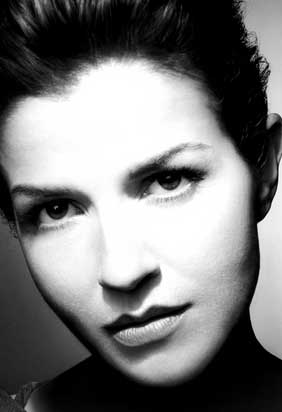 The effect is electrifying: The theme, first gentle, deepens into tenderness, then darkens in anguish. The emotions shift like quicksilver; grief stabs through, wavers, then gives way to a landscape of limitless hope. It's a profound and moving performance, and through it all Mutter is completely absorbed, rocking slightly back and forth as she probes deeper and deeper into the music -- playing, as a British critic recently wrote, like "a goddess stepped down from Mount Olympus."
The effect is electrifying: The theme, first gentle, deepens into tenderness, then darkens in anguish. The emotions shift like quicksilver; grief stabs through, wavers, then gives way to a landscape of limitless hope. It's a profound and moving performance, and through it all Mutter is completely absorbed, rocking slightly back and forth as she probes deeper and deeper into the music -- playing, as a British critic recently wrote, like "a goddess stepped down from Mount Olympus."
"Well -- better than being a devil!" Mutter says with a laugh, relaxing back at her hotel a few hours after the recording session at National Public Radio has ended.
At 43 she has spent most of her life as one of the world's most celebrated violinists, and she takes all the "goddess" stuff completely in stride. Mutter is still the drop-dead beauty she was when, as a teenage prodigy, she stormed the concert halls of Europe. The Breck Girl hair still shines, the lips are as bee-stung as ever, and those gravity-defying gowns still rock the classical world. But Mutter has evolved from mere goddess into something much more interesting -- one of the hardest-working musicians on the planet.
And her approach to the Mozart sonata -- which she's scheduled to perform tomorrow night at the Kennedy Center -- is a prime example. She has spent much of the past 18 months immersed in Mozart's world, studying the composer's letters, analyzing his scores in minute detail, even reading his father's treatise on the violin -- anything she can do to get completely inside the music. It's an impossible task, she admits. "Mozart," she says, "is an endless story."
Vast as it is, though, her "Mozart Project" -- with its recordings of the concertos, the piano trios and 16 of the sonatas, as well as a grueling series of concerts with Orkis that has taken her from Tokyo to Moscow -- is only part of Mutter's life as a musician.
She's become a leading proponent of contemporary music -- she'll be premiering ferociously complex new concertos by Sofia Gubaidulina and Andre Previn next year -- and she and Orkis are preparing their next in-depth project, on Johannes Brahms.
Then there's her teaching at London's Royal Academy of Music, a long string of benefit concerts, her Circle of Friends Foundation (which helps talented young string players) and her relentless badgering of the Bavarian government to implement her ideas on early music education.
"That's what she's like," says cellist Daniel Muller-Schott, who recently recorded the Mozart piano trios with Mutter. "She does everything at super speed."
So when Mutter seemed to announce on French television last month that she would be retiring on her 45th birthday -- causing great tearing of hair and rending of Gucci among her fans -- it threw the classical world into a minor panic. Was the most glamorous woman in classical music really hanging up her bow?
"No!" she says, running a hand through her hair in exasperation. "No no no no! That statement was completely misinterpreted. I've always said that I would not go on forever, because I didn't want to fall into the trap of just repeating myself. When I think I cannot bring anything new, anything important, anything different to music, I will stop. But this is not related to age!"
And that's quintessential Mutter, her colleagues say. Discovered at 13 by famed conductor Herbert von Karajan, she rocketed to superstardom and hasn't stopped pushing herself since.
"She's one of the premier violinists of all time," says cellist Lynn Harrell, who has performed extensively with Mutter. "But she's always searching for something more in the music, something special. There's no sitting on her laurels."
While the retirement rumors were overblown, Mutter's life does seem to be shifting gears. Last month, she announced that her marriage to the composer and conductor Sir Andre Previn, whom she wed in 2002, had ended in divorce. She won't talk about it, but musicians in Europe say they weren't surprised; the 34-year age difference between the two was just too great.
"We were very happily married, and we will always stay good friends," she says quietly. "Let's leave it at that."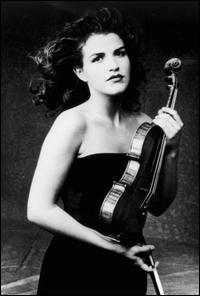
The young goddess daysMutter and Previn will continue to play together, but her personal life -- long the subject of European tabloids -- is becoming almost ordinary.
She lives in an art-filled house in Munich with her two children (Arabella, 16, and Richard, 12) from her first marriage to lawyer Detlef Wunderlich, who died of cancer in 1995. And while she still travels in stratospheric circles, her glamorous Monte Carlo days, she says, are "definitely over." Gone are the fast cars of her youth -- she famously bought a Porsche before she was old enough to drive -- replaced by a string of Chrysler Voyagers. (She's gone through four of them.)
"Working is a little more difficult, now," she says. "I have to be over by lunch, because the rest of the day is driving kids around."
In person, Mutter is unaffected and relaxed, with a quick sense of humor, and she dismisses the whole megastar thing as barely worth mentioning. Those sleek, elegantly sexy John Galliano gowns she performs in? "Just work uniforms," she shrugs.
She doesn't even listen to classical music, she says -- she's an Elvis fan, has Madeleine Peyroux on her iPod, and her cellphone plays Ennio Morricone. She jogs, meditates, does a little yoga, monitors her daughter's taste in rap and can't wait to see the new James Bond movie. In short: more the mini-vanned yuppie than Strad-packing diva.
"These days in Munich, it's not uncommon to see her out in the streets in jeans and a sweat shirt, boarding the subway with the kids," says pianist Orkis. "A decade ago that just wouldn't have happened."
But there's another side to Mutter as well, one that's brought her a steady stream of criticism. She's often seen as remote and even imperious onstage -- a sort of stern, unsmiling Valkyrie of the violin, barely noticing the mere mortals at her feet, accepting multiple curtain calls but rarely deigning to give an encore.
"I've never seen a performer who gives less onstage," says noted British critic Norman Lebrecht. "It is perfect, it is extremely well played, but she doesn't communicate with the audience. There's no eye contact. And she doesn't seem to bring any part of her personality to bear on the music. She's not so much a presence in the music, as an absence."
Mutter heatedly rejects the criticism. "I look pretty grim and gruesome when I play," she admits. "But I'm not an actor -- I'm a musician! I've never seen my role as having to 'act' something, on an out-of-music level. I'm communicating through the music, and my soul is out there, naked."
Her voice rises: "I'm not in the mood to smile while I'm playing; I'm there to transmit the music!"
To many, that's what makes her great.
"She hasn't based her career on the razzle-dazzle of the virtuoso," Harrell says. "She plays the violin as well as anyone has -- ever -- but she isn't out there to play faster or more brilliantly. She's out there to bring the listener closer to the intrinsic value of the music."
And what is the value of music? Mutter pauses for a moment, thinking.
"Music is a microcosm of life -- that's what Lambert and I try to bring forward in the Mozart sonatas," she says. "Everything is there -- everything. Like the Sonata in E Minor," she says, referring to the piece she played earlier that morning. "He wrote it around the time of the death of his mother, and he also had to leave his first love. It's very subtle and totally heartbreaking. When we're done, we have to go offstage and take deep breaths."
She smiles, as if hearing the music in her mind. "Because, you see," she says with quiet finality, "it's directly connected to the heart."
Marlboros at the Freer; Bill Frisell tonight!
November 17, 2006
__________________________________________________________________
The guitarist Bill Frisell is as amazing as he is uncategorizable -- one of the most consistently inventive musicians anywhere. He's coming to Lisner Auditorium tonight at 8 pm, and is definitely worth checking out if you can. (Richard Harrington has a good preview in the Post today.)
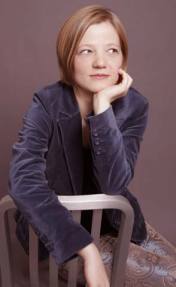
Ieva JokubaviciuteIt's always a treat to hear pianist Ieva Jokubaviciute play; she was here back in May with Musicians From Marlboro, and appeared with them again on Wednesday at the Freer Gallery, as part of the Bill and Mary Meyer Concert Series. Frustrating to only hear her in an accompanist role, though. Here's the review:
Ludwig van Beethoven was not, so far as we know, really a fun guy. But he did loosen his trademark cravat a bit in mid-career to write nearly 200 settings of folk songs, and while the results aren't pure gold (one critic calls them "the hack work of a genius"), they're playful, a bit quirky and actually kind of fun.
The fine young mezzo Tamara Mumford opened Wednesday night's Musicians From Marlboro concert at the Freer Gallery with six of the songs, and while she has a strong voice with an appealing bite to it, she sounded tense and rather formal, despite crisp, playful accompaniment by Lily Francis on violin, Marcy Rosen on cello and the always amazing Ieva Jokubaviciute at the piano.
The program moved into infinitely deeper waters with a vivid account of Bela Bartok's wondrous String Quartet No. 4, in which Francis and Rosen were joined by Yura Lee on violin and Eric Nowlin on viola. At first it felt like the players were in over their heads -- the brusque, take-no-prisoners Allegro that opens the work felt timid and woefully domesticated -- but they rallied well and played the rest of the piece with imagination and impressive technical skill.
Mumford returned to the stage with Brahms's much-loved "Zwei Gesange," Op. 91. The first song felt cast in concrete and promptly sank, but the second was everything you want in Brahms: luminous, warm, simultaneously full-blooded and absolutely weightless; a beautiful account. Violist Katie Kadarauch then joined the string players for a very robust account of Mozart's Quintet in D, K. 593 -- more muscular than Mozart is usually played, but brought off with conviction and sweeping power.
A Bare-bones "Orlando" from the Washington Concert Opera
November 8, 2006
_____________________________________________________________
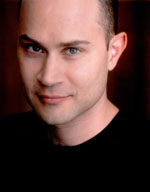
Bejun Mehta as OrlandoThe Washington Post, 11/08/06: There’s a lot to be said for paring opera down to its bare bones. Get rid of all the stagey excess –the glittering costumes, the prancing supernumeraries, the, um, “acting” of the divas, even the set itself – and the music can emerge unscathed.
That’s the philosophy of the Washington Concert Opera, and their production of George Frideric Handel’s 1733 “Orlando” on Sunday at Lisner Auditorium would make a believer out of the most hidebound traditionalist. On an elegantly minimalist stage, artistic director Antony Walker led a small orchestra of period instruments and five exceptionally fine singers through this relentlessly inventive masterpiece – and the result was an unqualified triumph.
The actual story (from Ludovico Ariosto’s epic “Orlando Furioso”) is silliness itself -- warriors do battle, maidens sigh and conspire, madness descends and a benevolent wizard finally saves the day. Other producers have tried to modernize the tale (Peter Sellars once set part of it on Mars), but Walker’s direct approach revealed just how musically adventurous and psychologically astute this opera really is.
Walker drew a crisp and electric performance from the orchestra, but the soloists were no less compelling – particularly Bejun Mehta in the title role. It’s not easy to play a ferocious warrior when you’re singing falsetto, but Mehta -- one of the finest countertenors around – brought it off with aplomb and understated wit. The young soprano Sarah Jane McMahon sang Dorinda with fetching charm and a lovely, agile voice, while soprano Nathalie Paulin brought fiery power to the role of Angelica. Countertenor David Walker made a very fine Medoro, and David Pittsinger – the sole low voice in the ensemble – balanced the forces with his commanding baritone.
Missa Solemnis at the Kennedy Center
November 7, 2006
________________________________________________________________________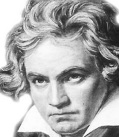 The Washington Post, 11/07/06: Beethoven's "Missa Solemnis" isn't for the fainthearted. It's one of the most formidable choral works ever written, a surging powerhouse that pushes performers -- and listeners -- to their limits. The composer himself called it his greatest work, and it may well be; it's certainly his most powerful statement of faith, and one of the most dramatic pieces of religious music ever penned.
The Washington Post, 11/07/06: Beethoven's "Missa Solemnis" isn't for the fainthearted. It's one of the most formidable choral works ever written, a surging powerhouse that pushes performers -- and listeners -- to their limits. The composer himself called it his greatest work, and it may well be; it's certainly his most powerful statement of faith, and one of the most dramatic pieces of religious music ever penned.
Norman Scribner and the Choral Arts Society of Washington made a daring assault on the work at the Kennedy Center Concert Hall on Sunday, with generally excellent and often exhilarating results. The "Missa" makes demands on singers that are almost impossible to meet -- fortissimo passages at the extremes of the human voice, complex and rapid-fire counterpoint, fugues of relentless intensity -- and there were, inevitably, rough spots, particularly among the sopranos, who turned a bit shrill when pushed to the limit (as would many of us).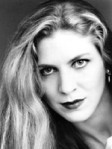
Stacey RishoiBut quibbles aside, Scribner brought impressive sweep and gravitas to the work. The opening Kyrie was radiant, and the Gloria (with its breathtaking fugue) at turns explosive and transcendent. The delicate passages in the Credo had an almost unearthly beauty, while the Sanctus erupted in a soaring statement of joy. It was clear throughout that Scribner knew exactly what he wanted, and had his forces well under control; the result was a convincing and very moving account.
The four soloists -- soprano Kelley Nassief, mezzo Stacey Rishoi, tenor Paul Austin Kelly and bass Gary Relyea -- handled this challenging material with aplomb, although only Rishoi stood out as a truly exceptional singer. Not only is her voice a thing of beauty, but it radiates intelligence and dramatic power as well. Violinist Elisabeth Adkins contributed a beautiful solo in the Benedictus.
Elliott Schwartz: Card-Carrying Post-Modernist
November 6, 2006
_____________________________________________________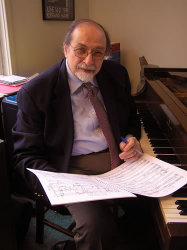 The Washington Post 11/06/06: Modern audiences have complicated ears. They’ve been drenched since birth in everything from Hildegard von Bingen to Camper Van Beethoven, from opera bouffe to bootleg Elvis. For better or worse, our ears reverberate with a universe of remembered and half-remembered music, all of which has shaped the way we listen. So shouldn’t contemporary composers write for those complex and contemporary ears?
The Washington Post 11/06/06: Modern audiences have complicated ears. They’ve been drenched since birth in everything from Hildegard von Bingen to Camper Van Beethoven, from opera bouffe to bootleg Elvis. For better or worse, our ears reverberate with a universe of remembered and half-remembered music, all of which has shaped the way we listen. So shouldn’t contemporary composers write for those complex and contemporary ears?
Composer Elliot Schwartz thinks so. He’s a card-carrying post-modernist who draws on almost any musical source or style that crosses his path, synthesizing college fight songs, 1960’s electronica and scraps of Schumann into vivid and wildly imaginative musical collages. Washington got a chance to hear some of this intriguing stuff on Friday, when the Cassatt Quartet (with pianist Aaron Shorr and the gifted English violinist Peter Sheppard Skaerved) played three of the composer’s best-known works at the Library of Congress.
The Cassatt opened with Schwartz’s 1980 quartet, the "Bellagio" Variations. It’s an exuberant whirlwind of a quartet; snippets of Beethoven and Mahler suddenly blossom out of Shwartz’s own writing, then just as suddenly change shape and evolve into something entirely new, always with compelling logic and grace. Shwartz’s style is cheerfully inclusive (“Shave and a Haircut” kept popping up) and even at its most arcane, when it can feel like a grad-school version of Name That Tune, feels coherent and alive; rewarding listening in every sense.
The composer’s other two works dug into deeper territory, using the same techniques of quotation and synthesis to explore aspects of the Holocaust (in “Tapestry” for piano trio) and the lives of two recently deceased friends (“Memorial in Two Parts” for violin and piano). Violinist Skaerved – a committed promoter of new music – turned in aggressive and convincing accounts of both works, accompanied with great style by Shorr and (in “Tapestry”) Cassatt cellist Nicole Johnson.
Two more traditional works fleshed out the program: a powerful if rather icy account of Franz Schubert’s Fantasy in C Major for violin and piano, and Maurice Ravel’s luminous and altogether delectable String Quartet in F Major, which the Cassatt played with equal parts elegance and fire – exactly what Ravel intended.
Top-Heavy Rossini from the New Dominion Chorale
October 31, 2006
___________________________________________________________________________
The Washington Post, 10/31/06: Despite its title, Gioacchino Rossini's "Petite Messe Solennelle" is a lively and sweeping work -- as heartfelt as anything the composer ever wrote and (as Napoleon III supposedly remarked) neither little, solemn nor particularly liturgical. Lasting roughly 90 minutes, it's unmistakably Rossini, overflowing with tender arias, kinetic rhythms and achingly lyrical melodies -- more an opera, in some ways, than a work of religious devotion.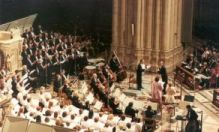 So it was with real anticipation that a near-capacity audience filled Alexandria's Schlesinger Concert Hall on Sunday to hear Thomas Beveridge and the New Dominion Chorale perform the work. But anticipation gave way to concern as virtually the entire chorale -- more than 150 singers, by rough count -- filled the stage.
So it was with real anticipation that a near-capacity audience filled Alexandria's Schlesinger Concert Hall on Sunday to hear Thomas Beveridge and the New Dominion Chorale perform the work. But anticipation gave way to concern as virtually the entire chorale -- more than 150 singers, by rough count -- filled the stage.
That's an enormous force to bear on what is, essentially, a piece of chamber music. Written for only 12 voices (accompanied by two pianos and the organ-like harmonium), the work gets its considerable power not from size but from intimacy. The soaring but delicate vocal lines, the subtle shadings, the detailed counterpoint -- all are on a distinctly human scale.
And, while Beveridge steered the proceedings with fervor and skill, the sheer weight of so many voices knocked the work out of balance and sapped much of its detail and grace. The four soloists held their ground admirably, but the organ and two pianos were often struggling to be heard; at times you had the impression of a gigantic singing caterpillar scurrying about on tiny piano legs.
Despite that, the performance was still very enjoyable. The talented bass Max Wittges, unfortunately, was under the weather and laid low, but soprano Fabiana Bravo, mezzo Laura Zuiderveen and tenor Issachah Savage produced thoughtful and well-turned performances.
Maya Beiser at the Kennedy Center
October 23, 2006
____________________________________________________________
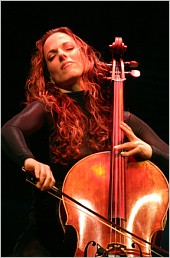 The Washington Post 10/23/06: Maya Beiser -- the hot young cello diva of the avant garde – is on a mission. Forget the traditional offerings of Bach and Brahms – Beiser puts together hip, global programs of purely 21st Century music, pushing the cello to its limits. She embraces amplification, revels in multi-media and likes to punch up the bland stage of the recital hall with visual drama. Her musical appetite is as wide as it is voracious, and top composers from Steve Reich to Osvaldo Golijov have lined up to write for her. In short, she’s out to shake the classical world by its neck -- to which we can only respond with loud and heartfelt cheers.
The Washington Post 10/23/06: Maya Beiser -- the hot young cello diva of the avant garde – is on a mission. Forget the traditional offerings of Bach and Brahms – Beiser puts together hip, global programs of purely 21st Century music, pushing the cello to its limits. She embraces amplification, revels in multi-media and likes to punch up the bland stage of the recital hall with visual drama. Her musical appetite is as wide as it is voracious, and top composers from Steve Reich to Osvaldo Golijov have lined up to write for her. In short, she’s out to shake the classical world by its neck -- to which we can only respond with loud and heartfelt cheers.
But as she showed at the Terrace Theater on Saturday night in her latest program, “Almost Human”, there’s a bit more shaking left to do. The central conceit of “Almost Human” is the closeness of the cello to the human voice, and most of the works on Beiser’s program explored that idea in interesting, sometimes compelling ways. “Khse Buon”, by the impressive Cambodian composer Chinary Ung, was vivid and and fiercely articulate, while Joby Talbot’s “Motion Detector” used amplification and tape loops to build a powerful and almost savage piece out of a few fragments of sound.
Other pieces, though, fell flat; Michael Gordon’s “Light is Calling” set long cello lines against a subtly distorted recorded background, while video by Bill Morrison pulsed on a huge screen. Like much of the evening, it was pleasantly mesmerizing rather than engaging, with little for the ears to engage.
And the centerpiece of the concert, Eve Beglarian’s “I am writing to you from a far-off country”, never got off the ground at all. Described as a “multimedia dreamscape”, the work called for Beiser to both play and recite a surrealist poem by Henri Michaux. But the music was self-important and drab, capturing none of Michaux’s subtle and butterfly-light imagery, and wasn’t helped by the excruciatingly dull video by filmmaker Shirin Neshat that unfolded heavily on screeens across the stage. The audience began sneaking out halfway through the piece -- and unfortunately, no one could blame them.

